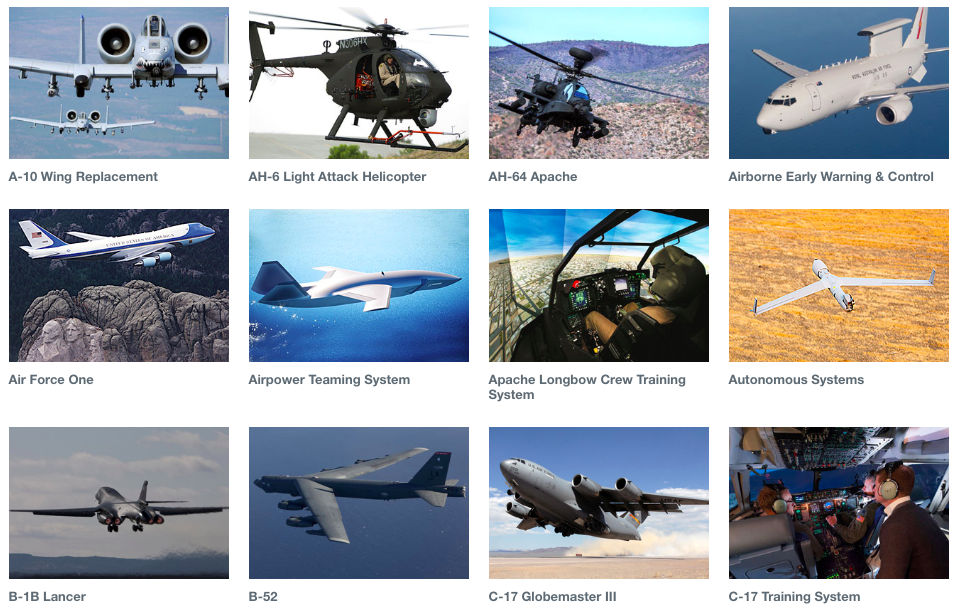
You won’t find Boeing’s Future Attack Reconnaissance Aircraft pictured on the company’s A-Z list of defense products any time soon.
AUSA: “Please note: Boeing will NOT be revealing any concept images of the Boeing FARA offering at AUSA.” That was the warning to reporters on an invitation to a media roundtable about the Army’s number one aviation priority, the Future Armed Reconnaissance Aircraft, where two Boeing executives were to “provide some comments about how Boeing is approaching the FARA competition.”
Well, “some” in this case means “hardly any.” Mark Cherry, vice president and general manager of Boeing Phantom Works, and Shane Openshaw, Boeing Future Attack Reconnaissance Aircraft program manager, refused to reveal any details whatsoever about their company’s FARA entry.
“Small, light, fast, agile, lethal, survivable with reach, flexibility in operational capability,” Openshaw said. “Our focus is on meeting those requirements.”
As for how, mum’s the word. “It’s competition sensitive, what our approach is now,” Openshaw said. “We are thrilled to be where we are in the competition.”
The competition consists of Lockheed Martin-owned Sikorsky, Textron subsidiary Bell, a team pairing AVX Aircraft Co. with L-3 Communications Integrated Systems, and another team whose members are Karem Aircraft, Northrop Grumman, and Raytheon.
For now, where Boeing is in the competition is lying in the weeds and studying what the competition is doing while working on their own design in utmost secrecy. AVX and L-3, Bell and Sikorsky, by contrast, are talking loud and proud about their FARA entries. (UPDATED: We talked to Karem later at the show: Watch the video interview here.)
AVX and L3 unveiled their design last spring at the Army Aviation Association of America’s annual conference in Nashville. They are offering a single-engine compound helicopter with coaxial rotors and ducted fans for forward propulsion.
Bell, whose retired OH-58D Kiowa Warrior scout helicopter is the aircraft FARA is primarily aimed at replacing, recently revealed as its FARA entry the Bell 360 Invictus. The stub-winged single-rotor helicopter with a tail rotor both ducted and canted incorporates some technology from its larger 525 Relentless commercial helicopter but features a low-drag futuristic fuselage.
Sikorsky formally confirmed at AUSA that its entry in FARA is the Raider-X, a derivative of its S-97 Raider that will be larger and more sophisticated but use the same combination of coaxial rotors and a pusher propeller to achieve the speeds the Army seeks.
Cherry and Openshaw wouldn’t comment on whether Boeing’s entry will have a coaxial rotor, a tail rotor, a pusher propeller or wheels. Their lips were sealed, and Cherry said for a good reason. That same strategy helped Boeing Phantom Works, which Cherry has led for about two years, win a competition with both Northrop Grumman (which dropped out) and MQ-1 Predator- and MQ-9 Reaper-maker General Atomics, to build the Navy’s new MQ-25 Stingray unmanned refueling aircraft.
“We strategically revealed [to the public] what we thought was relevant, while fully sharing with our ultimate customer [i.e. the military] exactly where we are,” Cherry said. In the FARA competition, he went on, “there’s no fuzz on the peach in terms of where we are with our ultimate customer.” In other words, the Army knows how far Boeing has gotten with its FARA design.
Cherry said the sealed-lip strategy has another purpose as well.
“You guys aren’t familiar with…competitive intelligence?” he asked the media roundtable. “So there’s people in all these companies that are really, really good at taking a configuration, taking a look at it and basically ascertaining capability.”
“You can ascertain capability based on expectations of drag, propulsion, single versus dual main rotors, whether you have a pusher [propeller] or whether you don’t have a pusher, do you cant your tail rotor, do you not cant, do you have skids, do you have integrated [retractable landing gear],” he went on. “All that translates into an assumed capability and with that assumed capability, you can derive costs. If you can derive costs you can derive, based on the parameters, where you think bids are going to be.”
“So there’s a lot that you can glean from revealing configurations,” Cherry concluded. “There’s a strategic decision made in terms of what you reveal, how you reveal it, and how much you reveal. And obviously some of our competitors have made that choice to go that route [of showing off their designs]. We just haven’t gone that route.”
Read the rest of our series of stories on the five contenders for the Future Attack Reconnaissance Aircraft:
In a ‘world first,’ DARPA project demonstrates AI dogfighting in real jet
“The potential for machine learning in aviation, whether military or civil, is enormous,” said Air Force Col. James Valpiani. “And these fundamental questions of how do we do it, how do we do it safely, how do we train them, are the questions that we are trying to get after.”



























